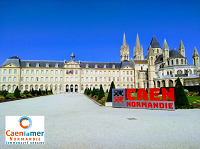Orateur
Description
In the last decade the investigation of the $^{132}$Sn and the $^{208}$Pb mass regions has experienced a great progress either experimentally by the advances of new facilities of radioactive ion beams, or theoretically by the development of different theoretical models and effective interactions.
Within the shell model (SM) framework [1], I will expose the calculated spectroscopic properties and the evolution of the collectivity in nuclei from $^{132}$Sn (Z$\ge$50, N$\ge$82) and $^{208}$Pb (Z$\ge$82, N$\ge$126) mass regions, where the calculations are carried out by making use of our effective interactions N3LOP [2] and H208 [3]. Some of these results are considered as references in the interpretation of several new measurements [4,5,6,7], which will be widely discussed.
In the second part, I will present a new effective interaction developed for $^{132}$Sn mass region, but with the proton particles Z$\ge$50 and neutron holes N$\le$82. In order to confirm the reliability of the TBME of this new interaction, the low-lying states energies, E2 and M1 transitions, of some nuclei are calculated and compared with the experimental data, with the prediction of some results not observed yet.
[1] E. Caurier, G. Martinez-Pinedo, F. Nowacki, A. Poves, and A.P. Zuker, Rev. Mod. Phys. 77, 427 (2005).
[2] H. Naïdja, F. Nowacki, and B. Bounthong, Phys.Rev.C 96, 034312 (2017).
[3] Houda Naïdja, Phys. Rev. C 103, 054303 (2021).
[4] A Jungclaus, P Doornenbal, J Acosta, et al. Phys.Lett. B 851, 138561(2024).
[5] B. Andel et al., Phys. Rev. C (accepted) (2024).
[6] M. Si, R. Lozeva, H. Naïdja et al.Phys. Rev. C 106, 014302 (2022).
[7] B Moon, A Gargano, H Naïdja, et al. Phys. Rev.C 105, 034334(2022).

